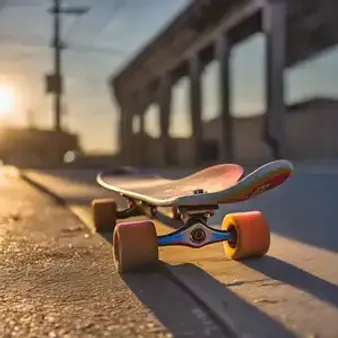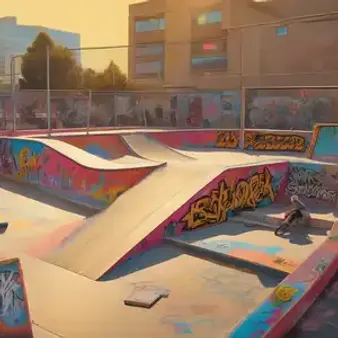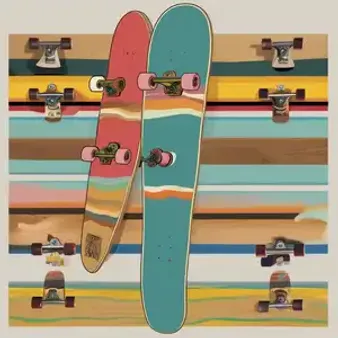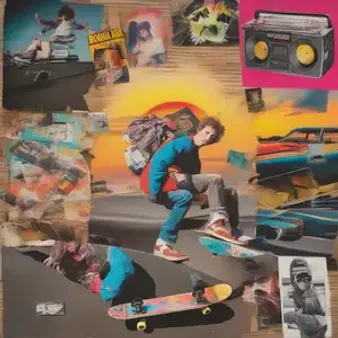Table of Contents
Grab your boards and get ready to shred back in time! At kizworld, we're diving deep into the year 1980, a time when skateboarding exploded, evolving from a niche hobby to a cultural phenomenon. Join us as we explore the skaters, the tricks, and the spirit that made skateboard 1980 so unforgettable.
Aspect | Details |
|---|---|
Key Trends | Rise of vert skateboarding, emergence of street skating, influence of punk rock. |
Iconic Skateboarders | Tony Hawk, Steve Caballero, Stacy Peralta |
Skateboard Design | Wider decks, urethane wheels, improved trucks |
Cultural Impact | Skateboarding films, magazines, and fashion gain popularity |
Lasting Legacy | Foundation for modern skateboarding, inspiration for future generations |
Skateboard Culture in 1980
Picture this: it's 1980, and skateboarding is like a rocket taking off! It's not just a hobby anymore; it's becoming a huge part of life for tons of people, especially young kids. Think about the coolest kids in school, the ones who always seem to be ahead of the curve – they're probably rocking a skateboard and some awesome threads. Skateboarding was about freedom, creativity, and pushing boundaries. It was a way to express yourself, like a wild, untamed dance on four wheels.
The Rise of Skateboarding Magazines
Speaking of cool, remember magazines? Well, in 1980, skateboard magazines were like gold! They showed off all the gnarly tricks, the coolest skaters, and the raddest styles. Magazines like Thrasher and Transworld Skateboarding started popping up, and everyone wanted a copy. It was like having a direct line to the heart of skateboarding culture. These magazines weren't just about the tricks; they were about the attitude, the music, and the whole vibe. Reading them felt like you were hanging out with the coolest kids in school, even if you were just a beginner trying to figure out how to ollie. Speaking of beginners, check out this awesome guide on how to get started with skateboarding!
Popular Skateboarding Magazines in 1980 |
|---|
Thrasher |
Transworld Skateboarding |
SkateBoarder Magazine |
Skateboard Culture in 1980
Iconic Skateboarders of 1980
Imagine being a fly on the wall at a skatepark in 1980. You'd see some legendary names carving up the ramps and inventing new tricks! Guys like Tony Hawk, the king of the vert ramp, were just starting their careers. Tony was known for his fearless style and crazy airtime. He was like the superhero of skateboarding, pushing the limits of what everyone thought was possible. Check out this awesome guide on vert skateboarding!
The Bones Brigade: Skateboarding Royalty
Then there was the Bones Brigade, a crew of skaters sponsored by Powell Peralta. They were like the rockstars of skateboarding! Think of them as the coolest band in school, only instead of instruments, they had skateboards. These guys, like Steve Caballero, Tommy Guerrero, and Lance Mountain, weren't just amazing skaters; they were trendsetters. They had their own style, their own music, and their own way of looking at the world, and it totally resonated with kids like me. Their videos, like "The Search for Animal Chin," weren't just about skateboarding; they were mini-movies with storylines, humor, and of course, mind-blowing skateboarding. If you're interested in the history of skateboarding, you should learn about Louie Lopez, another skateboarding legend.
Famous Bones Brigade Members |
|---|
Steve Caballero |
Tommy Guerrero |
Lance Mountain |
Iconic Skateboarders of 1980
The Evolution of Skateboard Design in 1980
Okay, imagine this: you're holding a skateboard from the 70s – it's probably got clay wheels and feels super clunky, right? Now, fast forward to 1980 – skateboards got a massive upgrade! It's like someone swapped out a clunky toy car for a sleek sports car. The biggest game-changer? Urethane wheels! These babies were like magic – they gripped the pavement better, rolled smoother, and made landing tricks way easier. It's no wonder everyone was stoked about them!
From Clay to Urethane: A Wheel Revolution
But it wasn't just the wheels – skateboard decks themselves got wider and more concave. Think about how you stand on a skateboard – that slight curve in the board is the concave. This new shape gave skaters more control and stability, which was super important for pulling off those gnarly tricks, especially on vert ramps. If you're interested in learning more about vert skateboarding, check out this awesome guide on vert! And let's not forget the trucks – they got stronger and more responsive, making it easier to turn and carve. Basically, skateboards in 1980 were built for speed, agility, and pushing the limits.
Component | 1970s Skateboards | 1980s Skateboards |
|---|---|---|
Wheels | Clay or metal, often hard and unforgiving | Urethane, providing smoother rides and better grip |
Decks | Narrower, flatter shapes | Wider, more concave decks for increased control and stability |
Trucks | Basic, less responsive designs | Stronger, more responsive trucks for sharper turns |
The Evolution of Skateboard Design in 1980
The Legacy of Skateboarding in 1980
1980 wasn't just a flash in the pan for skateboarding; it was like planting a seed that grew into a giant tree! It changed how people saw skateboarding – it wasn't just for kids messing around anymore. It became something cool, something rebellious, something you could be passionate about. Think about it: without those crazy skaters in the 80s inventing new tricks and pushing boundaries, skateboarding wouldn't be what it is today.
From Backyards to the Big Time
Back then, skaters were making their own ramps in backyards and empty pools – they were making something out of nothing! That DIY spirit, that drive to create and explore, it's still a huge part of skateboarding today. And those skateboard magazines from back in the day? They helped spread the stoke, showing kids all over the world how awesome skateboarding could be. They might not have known it then, but those 80s skaters were creating a legacy that would inspire generations to come. If you're just starting out, check out these tips on how to get started with skateboarding!
The Birth of a Global Community
1980 was like the big bang of skateboarding – it created a whole universe of skaters, artists, filmmakers, and musicians who were all connected by this one amazing thing. It wasn't just about the tricks; it was about the music you listened to, the clothes you wore, the way you looked at the world. And that sense of community? It's still strong today. Walk into any skatepark, and you'll see kids from all walks of life, all brought together by their love for skateboarding. It's like a secret handshake, a way of saying, "I get it, I'm one of you." Speaking of skate gear, ever wondered what to look for in a board? We've got you covered with this guide on choosing the right skateboard.
Element | Impact of 1980s Skateboarding |
|---|---|
Style | From Vans shoes to punk rock, 1980s skateboarding influenced fashion and music trends that continue to this day. |
DIY Ethos | The era's focus on building ramps and creating skate spots fueled a do-it-yourself spirit that remains integral to skateboarding culture. |
Community | Skateboarding in the 1980s fostered a global community of individuals connected by their shared passion, transcending geographical boundaries. |
The Legacy of Skateboarding in 1980
Final Thought
Skateboarding in 1980 wasn't just about tricks and boards; it was about a cultural shift, a rebellion against the norm that resonated with a generation. The innovations, the style, and the sheer audacity of the skaters in 1980 laid the groundwork for the skateboarding we know and love today. It's a legacy worth celebrating.